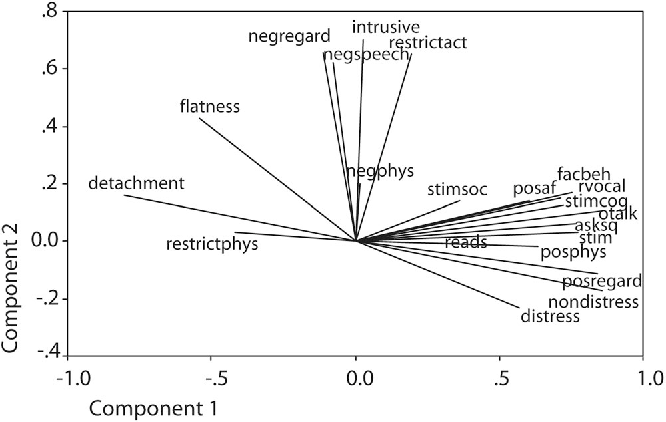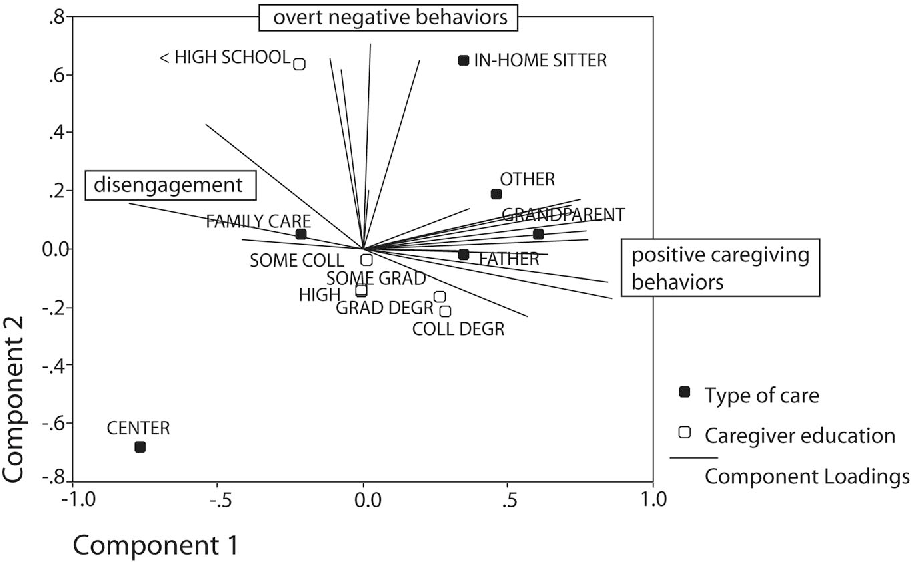The goal of principal components analysis is to reduce an original set of variables into a smaller set of uncorrelated components that represent most of the information found in the original variables. This article is set up as a tutorial for nonlinear principal components analysis NLPCA systematically guiding the reader.

Pdf Nonlinear Principal Components Analysis Introduction And Application Semantic Scholar
This article is set up as a tutorial for nonlinear principal components analysis NLPCA systematically guiding the reader through the process of analyzing actual data on.
. Mariëlle Linting Anita van der Kooij. Categorical Principal Components Analysis CATPCA with Optimal Scaling. The subscales of job.
The most important advantages of nonlinear over linear PCA are that it incorporates nominal and ordinal. Nonlinear PCA available as the program CATPCA1 CATegorical Principal components analysis implemented in the Categories module of SPSS Meulman Heiser SPSS 1999 is an optimal scaling method belonging to the nonlinear multivariate analysis techniques. The authors provide a didactic treatment of nonlinear categorical principal components analysis PCA.
This article is set up as a tutorial for nonlinear principal components analysis NLPCA systematically guiding the reader through the. It tries to preserve the essential parts that have more variation of the data and remove the non-essential parts with fewer variation. NLPCA is a more flexible alternative to linear PCA that can handle the ana Categorical principal.
A Tutorial Journal of Personality Assessment 94 1. NLPCA is a more flexible alternative to linear PCA that can handle the ana. This article is set up as a tutorial for nonlinear principal components analysis NLPCA systematically guiding the reader through the process of analyzing actual data on personality assessment by the Rorschach Inkblot Test.
Up to 10 cash back To avoid this limitation categorical principal component analysis CATPCA or nonlinear principal component analysis NLPCA has been introduced as an alternative in dealing with nominal and ordinal data Linting et al. Please participate in the DSA Client Feedback Survey. This article is set up as a tutorial for nonlinear principal components analysis NLPCA systematically guiding the reader through the process of analyzing actual data on personality.
CATPCA 1115 is a technique derived from linear principal component analysis PCA that reduces a set of numerical variables to a lower number of noncorrelated components with the smallest loss. This article is set up as a tutorial for nonlinear principal components analysis NLPCA systematically guiding the reader through the process of analyzing actual data on personality assessment by the Rorschach Inkblot Test. Reducing the number of variables of a data set naturally comes at the expense of.
Nonlinear principal components analysis with catpca. You can create one manually by copying the eigenvalues out of the Model Summary table in the output or if you will need to create a lot of scree plots you can use the SPSS Output Management System OMS to automate pulling the values out of the table and creating the plot. Nonlinear principal components analysis with CATPCA.
Categorical principal components analysis CATPCA is appropriate for data reduction when variables are categorical eg. This method is the nonlinear equivalent of standard PCA and reduces the observed variables to a number of uncorrelated principal components. Institute for Nonlinear Science University of California San Diego La Jolla CA 92093-0402 Dated.
CATPCA does not produce a scree plot. The authors provide a didactic treatment of nonlinear categorical principal components analysis PCA. Without making any assumptions about the measurement levels of the variables.
This chapter focuses on the analysis of ordinal and nominal multivariate data using a special variety of principal components analysis that includes nonlinear optimal scaling transformation of the variables. One of the most commonly used methods to reduce the dimension of data and reveal hidden patterns is the principal component analysis PCA. J Pers Assess 2012 94112-25.
Categorical principal components analysis is also known by the acronym CATPCA for categorical principal components analysis. Nonlinear principal components analysis with CATPCA. This method is the nonlinear equivalent of standard PCA and reduces the observed variables to a number of uncorrelated principal components.
The nonlinear categorical principal component analysis. One of the most commonly used methods to reduce the dimension of data and reveal hidden patterns is the principal component analysis PCA. Since the early 1930s classical statistical methods have been adapted in various ways to suit the particular characteristics of social and behavioral science research.
Principal Component Analysis or PCA is a dimensionality-reduction method that is often used to reduce the dimensionality of large data sets by transforming a large set of variables into a smaller one that still contains most of the information in the large set. Nonlinear Principal Components Analysis with CATPCA. Version 2 Principal component analysis PCA is a mainstay of modern data analysis - a black box that is widely used but poorly understood.
This article is set up as a tutorial for nonlinear principal components analysis NLPCA systematically guiding the reader through the process of analyzing actual data on personality assessment by the Rorschach Inkblot Test. Nonlinear principal components analysis with CATPCA. Relevant clinical information can influence the diagnostic probability and reporting of ultrasound findings.
Alternatively categorical also known as nonlinear principal components analysis CATPCA has been developed for the data given mixed measurement level such that nominal ordinal or numeric which may not have linear relationship with each other. Child and Family Studies Leiden University The Netherlands. Return to the SPSS Short Course.
Nonlinear principal components analysis with CATPCA. Nonlinear principal components analysis. 101080002238912011627965 PubMed CrossRef Google Scholar Martinez Diego Borja Tathiana Nadin Medellín and Pedro Cueva.
The goal of this paper is to dispel the magic behind this black box. Ordinal and the researcher is concerned with identifying the. Principal Component Analysis PCA is a linear dimensionality reduction technique that can be utilized for extracting information from a high-dimensional space by projecting it into a lower-dimensional sub-space.
Linting and Van der Kooij 2012. The nonlinear categorical principal component analysis method CATPCA is an extended version of this method for categorical data ie ordinal and nominal data.

Pdf Nonlinear Principal Components Analysis Introduction And Application Semantic Scholar

Pdf Nonlinear Principal Components Analysis Introduction And Application Semantic Scholar

Pdf Nonlinear Principal Components Analysis Introduction And Application Semantic Scholar

Pdf Principal Components Analysis With Nonlinear Optimal Scaling Transformations For Ordinal And Nominal Data Semantic Scholar

Pdf Nonlinear Principal Components Analysis Introduction And Application Semantic Scholar

Pdf Nonlinear Principal Components Analysis Introduction And Application Semantic Scholar

Pdf Principal Components Analysis With Nonlinear Optimal Scaling Transformations For Ordinal And Nominal Data Semantic Scholar
0 comments
Post a Comment